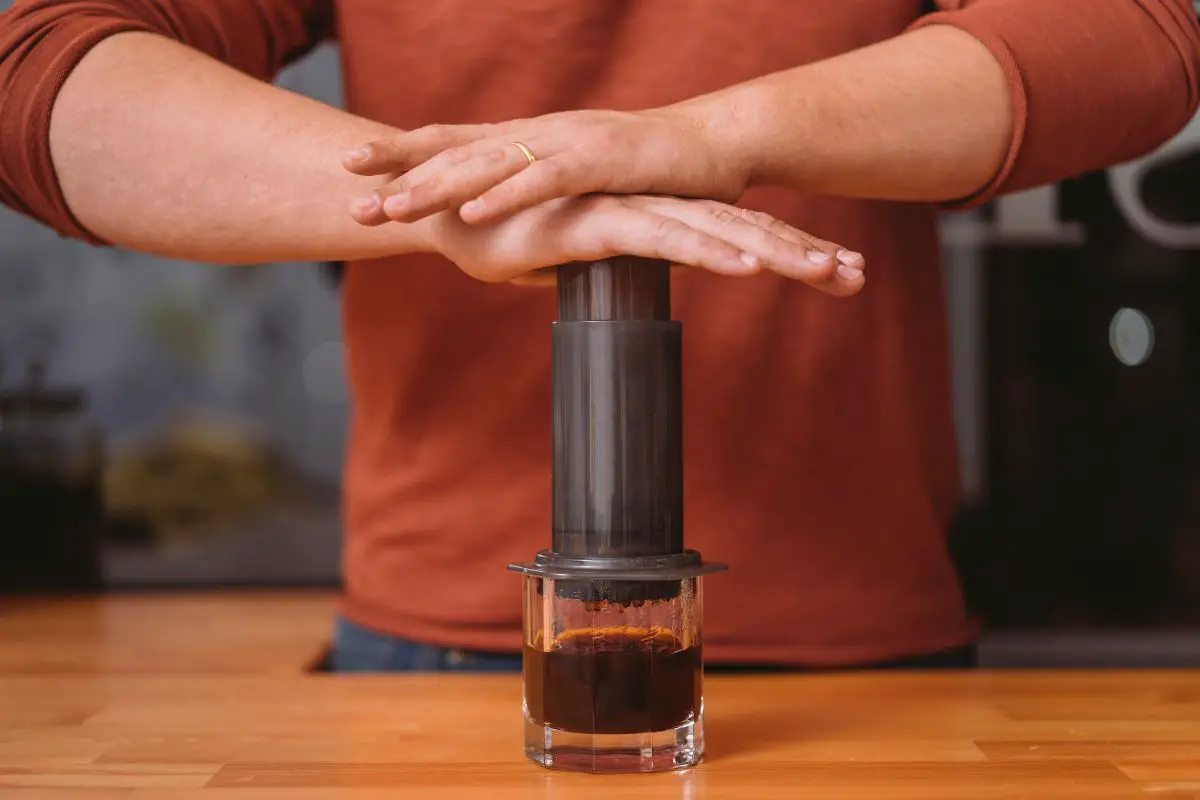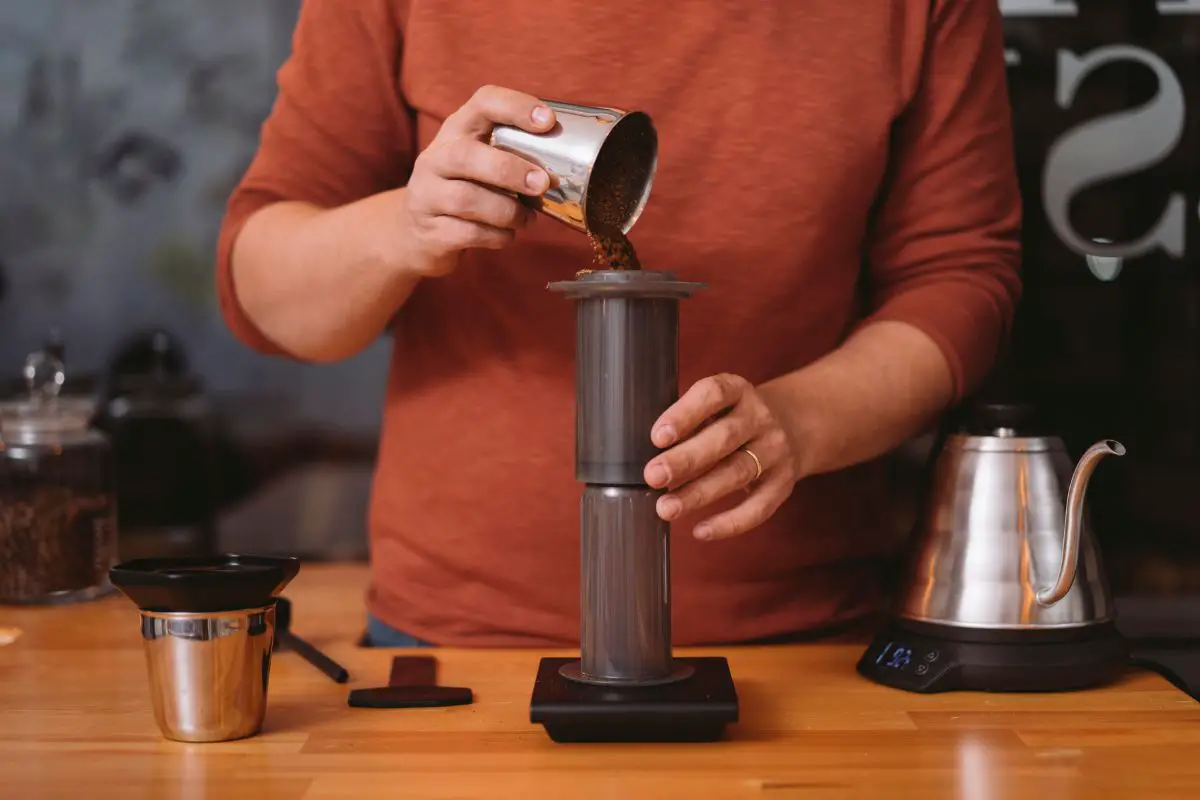Coffee is a beloved beverage that has become an integral part of many people’s daily routines. Whether it’s a morning pick-me-up or an afternoon indulgence, the quality and taste of brewed coffee are of utmost importance to coffee enthusiasts.

One key aspect that determines the flavor profile and overall quality of brewed coffee is its total dissolved solids (TDS) content. TDS refers to the concentration of dissolved substances, such as coffee solubles, in a liquid. It is measured in terms of the percentage of the weight of the dissolved solids compared to the weight of the brewed coffee. Understanding the classic industry standard for TDS in brewed coffee is crucial for both coffee professionals and enthusiasts alike, as it allows for consistency and quality across the board.
Achieving the ideal TDS range in brewed coffee is essential for several reasons. Firstly, TDS directly affects the taste and strength of the coffee. A coffee with a lower TDS may taste weak and watery, while a coffee with a higher TDS can be overly bitter and overpowering.
Secondly, TDS also influences the extraction of desirable flavors and aromas from the coffee grounds. If the TDS is too low, it means that not enough of the coffee’s soluble compounds have been extracted, resulting in a lackluster and underwhelming cup. On the other hand, if the TDS is too high, it suggests an over-extraction, leading to a bitter and unpleasant taste. Therefore, finding the right TDS range is crucial for achieving a balanced and flavorful cup of coffee.
What is TDS and Why Does it Matter in Coffee Brewing?
TDS, or Total Dissolved Solids, is a crucial measurement in coffee brewing that quantifies the amount of soluble compounds present in a brewed coffee sample and plays a significant role in determining the coffee’s flavor, strength, and overall quality. It represents the total content of dissolved substances, such as minerals, sugars, organic acids, and other compounds, that contribute to the sensory experience of coffee.
By measuring TDS, brewers can understand the extraction efficiency, sweetness, body, and balance of a coffee brew. This knowledge allows them to make informed adjustments to brewing parameters and achieve a desired flavor profile for a given coffee bean.
The importance of TDS in coffee brewing lies in its ability to influence the taste, aroma, and mouthfeel of the final cup. Different coffee compounds extract at different rates, and TDS helps brewers evaluate the brewing process to ensure optimal extraction. If the TDS is too low, the brew may taste weak, lacking in body and sweetness. On the other hand, if the TDS is too high, the coffee might taste overpowering, bitter, and unbalanced.
By measuring TDS, brewers can fine-tune variables like grind size, water temperature, brew time, and coffee-to-water ratio to achieve the ideal extraction and TDS range for a specific coffee bean.
Achieving the ideal TDS range is crucial because it directly affects the overall quality and consistency of brewed coffee. Coffee professionals and enthusiasts strive to find the perfect balance that produces a well-rounded cup with pleasing flavors and harmonious characteristics. The ideal TDS range can vary depending on the desired taste preferences and coffee brewing method. For example, espresso typically has a higher TDS compared to filter coffee. However, regardless of the chosen brewing method, the aim is to achieve a TDS range that maximizes the extraction of desirable compounds while minimizing the extraction of undesirable ones. This balance ensures that the coffee is flavorful, balanced, and enjoyable to consume, making TDS an essential factor to consider in the pursuit of brewing the perfect cup of coffee.
The Importance of Achieving the Ideal TDS Range
Achieving the optimal range of Total Dissolved Solids (TDS) is of utmost importance in order to ensure the desired quality and consistency in the preparation of coffee. TDS refers to the measurement of all the solids that have dissolved in the brewed coffee, including coffee compounds, minerals, and other substances. It serves as a critical indicator of the coffee’s strength, flavor, and extraction efficiency.
To fully appreciate the significance of attaining the ideal TDS range, it is essential to explore its implications. Achieving the optimal TDS ensures that the coffee is neither too weak nor too strong, striking a delicate balance that pleases the taste buds. Additionally, it contributes to the consistency of the brew, as it ensures that each cup of coffee prepared follows the same standards. This consistency is crucial for coffee shops and professionals who aim to offer a reliable and enjoyable experience to their customers.
To achieve the desired TDS range, several factors come into play. Firstly, the coffee-to-water ratio is crucial, as it determines the strength and extraction of the brew. Secondly, the grind size plays a significant role, as it affects the surface area of the coffee particles exposed to water. Lastly, the brewing time and temperature influence the extraction process and ultimately impact the TDS. By carefully controlling and adjusting these factors, coffee professionals can aim to achieve the optimal TDS range consistently.
Transitioning into the subsequent section about factors that affect the TDS of brewed coffee, it is essential to delve deeper into the intricacies of each variable. Understanding how the coffee-to-water ratio, grind size, brewing time, and temperature influence the TDS will provide a comprehensive understanding of how to achieve the desired outcome.
Factors That Affect the TDS of Brewed Coffee

Factors such as the coffee-to-water ratio, grind size, brewing time, and temperature all play a significant role in influencing the Total Dissolved Solids (TDS) of a brewed cup of coffee.
The coffee-to-water ratio refers to the amount of coffee grounds used in relation to the volume of water. A higher coffee-to-water ratio will generally result in a higher TDS, as more coffee solids are extracted during brewing.
Additionally, the grind size of the coffee beans can impact the TDS. Finer grinds have a larger surface area, allowing for more extraction and potentially higher TDS. On the other hand, coarser grinds may result in a lower TDS due to less surface area for extraction.
Brewing time and temperature are also important factors in determining the TDS of brewed coffee. Longer brewing times generally lead to higher TDS as more time allows for greater extraction of coffee solids. However, there is a balance to be struck, as excessively long brewing times can result in over-extraction, leading to a bitter taste. Similarly, temperature affects the TDS, with higher temperatures typically resulting in higher extraction rates and therefore higher TDS. However, brewing coffee at excessively high temperatures can also lead to undesirable flavors.
Understanding the various factors that influence the TDS of brewed coffee is crucial for achieving the desired taste and quality. By carefully adjusting the coffee-to-water ratio, grind size, brewing time, and temperature, coffee enthusiasts can control the TDS to create a cup of coffee that suits their preferences.
Next, we will explore how to measure TDS in brewed coffee, providing a practical approach to ensure consistency and precision in the brewing process.
Transitioning into the subsequent section about ‘how to measure TDS in brewed coffee,’ it is important to have a reliable method for quantifying the TDS to ensure consistency in brewing.
How to Measure TDS in Brewed Coffee
One key aspect of ensuring consistency and precision in the brewing process involves employing a reliable method to accurately quantify the concentration of dissolved solids in a cup of brewed coffee. By measuring the Total Dissolved Solids (TDS), coffee professionals can assess the strength and extraction of the beverage, allowing them to make adjustments to achieve the desired flavor profile. Several methods are available for measuring TDS in brewed coffee, each with its advantages and limitations.
One commonly used method to measure TDS in brewed coffee is through the use of a refractometer. This device measures the refractive index of a liquid, which is influenced by the concentration of dissolved solids. By placing a small sample of brewed coffee on the refractometer’s prism and shining light through it, the device calculates the TDS value based on the refractive index. Refractometers are widely favored for their accuracy and speed, making them a popular choice in specialty coffee shops and laboratories.
Another method for measuring TDS in brewed coffee is the use of a digital density meter. This device measures the density of the liquid by determining its mass and volume. By comparing the density of the brewed coffee to that of pure water, the TDS value can be determined. Digital density meters provide highly accurate results, making them suitable for quality control purposes. However, they are less commonly used in everyday coffee brewing due to their higher cost and complexity.
By accurately measuring the TDS in brewed coffee, coffee professionals can gain insights into the extraction process and adjust brewing parameters to achieve the desired TDS. This includes modifying variables such as grind size, water temperature, brew time, and coffee-to-water ratio. These adjustments can affect the extraction efficiency and concentration of dissolved solids, ultimately influencing the flavor, body, and strength of the coffee. Therefore, understanding how to measure TDS in brewed coffee serves as a crucial step in the pursuit of consistently excellent coffee.
Adjusting Brewing Parameters to Achieve the Desired TDS
To optimize the extraction process and control the concentration of dissolved solids in the final cup, adjustments to various brewing parameters can be made.
One of the most important parameters to consider is the coffee-to-water ratio. Increasing the amount of coffee relative to the water will result in a higher TDS, as more coffee grounds will be available for extraction. Conversely, decreasing the coffee-to-water ratio will result in a lower TDS.
Additionally, the grind size of the coffee beans can also have an impact on the TDS. Finer grind sizes will increase the surface area of the coffee grounds and allow for more efficient extraction, leading to a higher TDS. Coarser grind sizes, on the other hand, will result in a lower TDS as the extraction process is less efficient.
Another factor to consider is the water temperature. Higher temperatures can lead to more efficient extraction and a higher TDS. However, it is important to strike a balance as excessively high temperatures can result in over-extraction and a bitter taste.
The brewing time also plays a role in controlling the TDS. Longer brewing times allow for more extraction and a higher TDS, while shorter brewing times will result in a lower TDS. It is worth noting that adjusting one parameter may necessitate adjustments to others to achieve the desired TDS.
Adjusting brewing parameters such as the coffee-to-water ratio, grind size, water temperature, and brewing time can have a significant impact on the TDS of brewed coffee. By carefully controlling these parameters, it is possible to achieve the desired TDS and create a well-balanced and flavorful cup of coffee.
In the next section, we will explore different TDS ranges for various coffee types, further highlighting the importance of understanding and adjusting brewing parameters to achieve optimal results.
Exploring Different TDS Ranges for Various Coffee Types

Exploring the TDS ranges for different types of coffee allows for a deeper understanding of how brewing parameters can influence the overall flavor profile of the final cup. Total Dissolved Solids (TDS) refers to the concentration of solids that are dissolved in the brewed coffee. It includes compounds such as sugars, acids, oils, and other soluble substances that contribute to the taste and aroma.
By experimenting with different TDS ranges, coffee enthusiasts and professionals can tailor their brewing methods to achieve the desired flavor characteristics for specific coffee types.
The TDS range for brewed coffee can vary depending on factors such as the type of coffee bean, roast level, brewing method, and personal preference. Generally, a TDS range of 1.15% to 1.35% is considered the industry standard for brewed coffee. However, certain coffee types may benefit from being brewed within slightly higher or lower TDS ranges.
For instance, lighter roasted coffees tend to have a higher acidity and delicate flavors, and brewing them within the lower end of the TDS range can help preserve these characteristics. On the other hand, darker roasted coffees with bolder flavors may require a slightly higher TDS range to fully extract their desirable compounds.
Experimenting with different TDS ranges can lead to a more nuanced understanding of the brewing process and its impact on flavor. By adjusting brewing parameters such as grind size, water temperature, and brew time, coffee enthusiasts can manipulate the TDS levels to highlight specific flavor notes and achieve a well-balanced cup.
Understanding the ideal TDS range for different coffee types can also help in troubleshooting brewing issues. If a coffee tastes too weak or lacks depth, increasing the TDS range within reasonable limits might enhance the overall flavor profile. Conversely, if a coffee tastes too bitter or overpowering, reducing the TDS range might bring more balance to the cup.
By exploring and experimenting with TDS ranges, coffee enthusiasts can unlock the full potential of their coffee beans and create a truly enjoyable drinking experience.
Frequently Asked Questions
Can TDS be used to determine the quality of brewed coffee?
TDs can be used as an objective measure to assess the quality of brewed coffee. By analyzing the concentration of dissolved solids, it provides valuable insights into the extraction efficiency, flavor profile, and consistency of the brew, ensuring a reliable and satisfying coffee experience.
Is there a recommended TDS range for all types of coffee?
There is no universally recommended TDS range for all types of coffee. However, TDS can be used as a tool to assess the quality and extraction of brewed coffee, providing valuable information for brewers and coffee professionals.
How does the water temperature affect the TDS of brewed coffee?
The water temperature significantly impacts the Total Dissolved Solids (TDS) of brewed coffee. Higher temperatures tend to extract more solubles, resulting in a higher TDS. However, precise measurements and control are necessary to maintain the desired taste profile and industry standards.
Can adjusting the brewing time impact the TDS of coffee?
Adjusting the brewing time can impact the total dissolved solids (TDS) of coffee. Longer brewing times tend to extract more compounds, resulting in a higher TDS. However, the industry standard for TDS in brewed coffee may vary.
Are there any health implications associated with high or low TDS levels in coffee?
High or low TDS levels in coffee may have health implications. Excessive TDS can lead to increased intake of caffeine and other compounds, potentially causing adverse effects. Conversely, low TDS may result in a weak and less flavorful brew.
Conclusion
In conclusion, understanding the concept of Total Dissolved Solids (TDS) and its significance in coffee brewing is paramount in achieving the perfect cup of joe. By measuring the TDS of brewed coffee, coffee enthusiasts and professionals alike can assess the extraction efficiency and quality of their brew.
Various factors, such as grind size, water temperature, and brew time, can significantly influence the TDS of brewed coffee. Therefore, it is crucial to carefully adjust these brewing parameters to achieve the desired TDS range.
Different coffee types may require different TDS ranges to enhance their unique flavors and characteristics. For example, a light roast may benefit from a lower TDS range to preserve its delicate and nuanced flavors, while a dark roast may require a higher TDS range to bring out its bold and robust qualities. By exploring and experimenting with different TDS ranges, coffee enthusiasts can unlock the full potential of their favorite coffee beans.
In conclusion, the TDS of brewed coffee serves as an industry standard for assessing the quality and extraction efficiency of a brew. By measuring and adjusting the TDS, coffee enthusiasts can optimize their brewing parameters to achieve the desired flavors and characteristics of their coffee.
Whether it is a light roast or a dark roast, understanding and controlling the TDS range is essential in unlocking the full potential of every cup of coffee. So, next time you brew your favorite coffee, remember the importance of TDS and its role in creating a truly exceptional coffee experience.